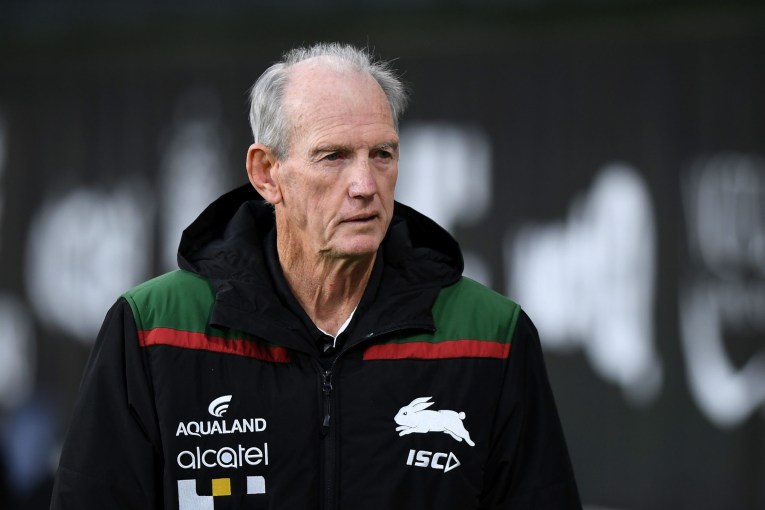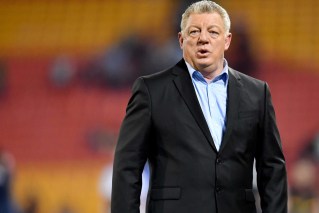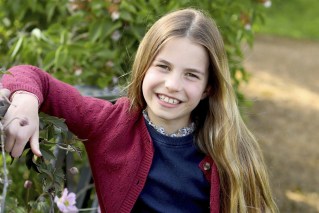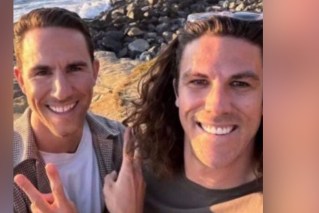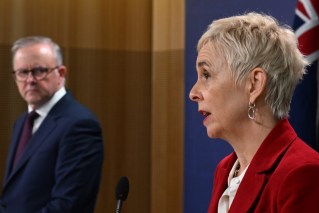Our virus-buster tells of 2am texts, lost holidays and the man who cooks her dinner
Jeannette Young was planning overseas trips with her husband, a professor of microbiology, when they heard of a new virus in Wuhan, China. She would have to break a promise made to him a decade earlier.
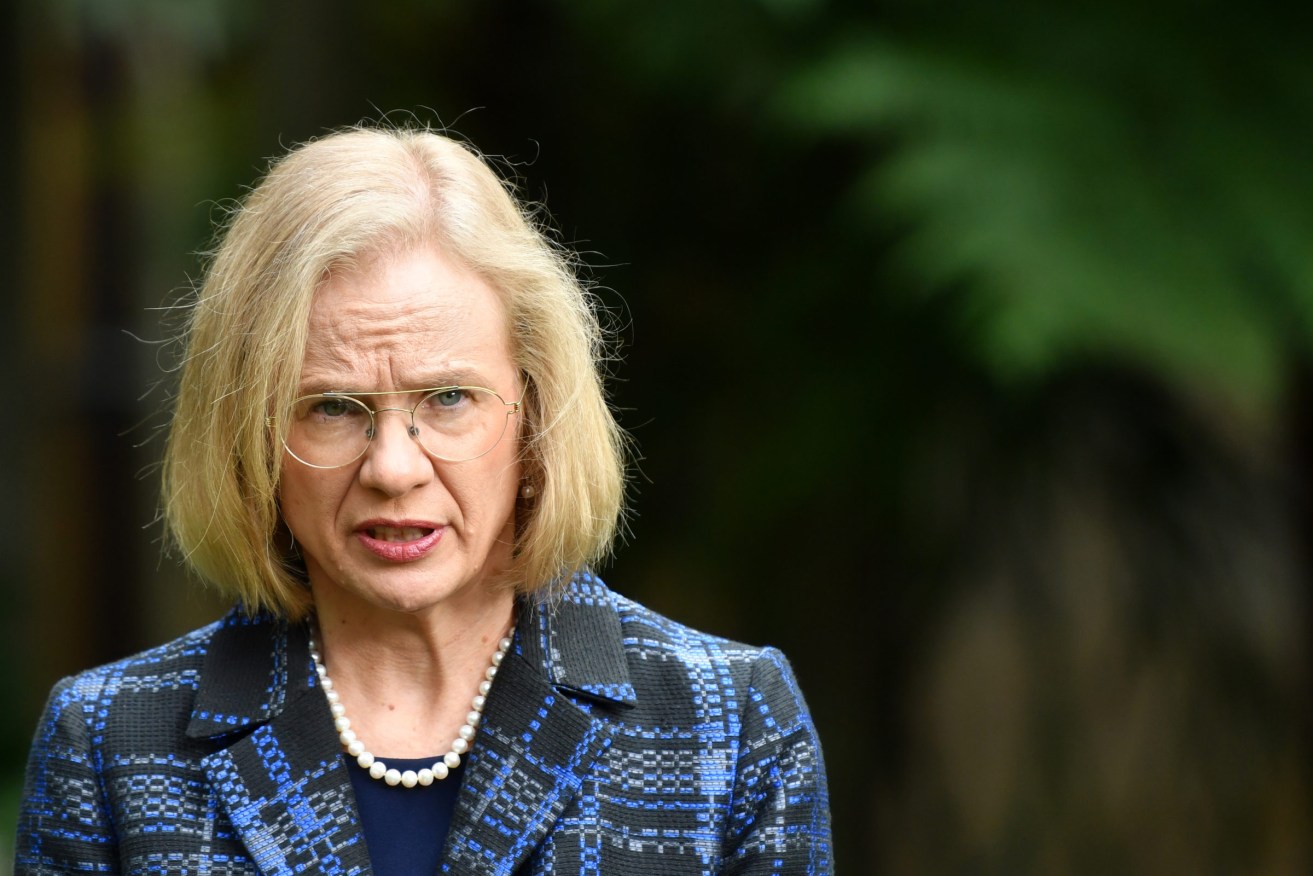
Chief Health Officer Jeannette Young has banned unvaccinated student nurses from hospitals and aged care. (Photo: AAP Image/Darren England)
“I had a pandemic in 2009 and at the end of it I swore to my husband that I would never do another one,” Young laughed this week, making light of the added responsibility that comes with being Queensland’s Chief Health Officer. It is a job she relishes.
Her husband, now contemplating semi-retirement, has become a valuable sounding board for Young and understands the long hours and late night phone calls. Young is also comforted by the fact he will have dinner ready if she can make it (she often skips lunch).
It must be said that Young has barely put a foot wrong since the outbreak hit Australia in January. She suggests there have been missteps, and they have learned from them, but for the most part her advice, decisions, and, importantly, near daily public commentary have proved reliable, concise and strong.
This pandemic, the virus SARS-CoV-2 causing the disease COVID-19, has proved much worse than swine flu in 2009. Queensland was well-prepared, having reviewed and refined its strategies and resources, but it would require an enormous personal and professional commitment from Young. She has become a vital part of the national deliberations, and now stands, strategically and often literally, at the side of Premier Annastacia Palaszczuk.
With added responsibilities come extraordinary powers that Young is currently authorised to wield for 201 days of 2020. The government will likely extend that emergency declaration and Young will need to keep up the intensity. Needless to say, Young’s travel plans have been abandoned, like so many others.
“I was going to Paris for (a major biology and infectious diseases conference) at Easter, and then to Russia to see the Bolshoi Ballet,” Young told InQueensland this week.
Asked if she would travel again, when the international borders eventually reopened, Young was characteristically cautious.
“I’d look at the health system that’s there,” she said.
“Because if I was going to get this, I’d want to get it here in Queensland. I could cope with (being treated anywhere in) the rest of the country. Not overseas.”
More than four months into Queensland’s pandemic response, Young is adamant that the decisions made to close the borders, and restrict public movement and activities, have saved thousands of lives and prevented the health system being overwhelmed. The additional intensive care and emergency capacity brought online have not been required, and Young is now advising the Premier on the easing of restrictions to boost social and economic activity.
Whether Queensland needed to go so hard, so fast, comes down to knowing whether every precaution was being taken at the time, based on the best available advice. And you need only look at the situation in other countries.
“I’m not sure that I could have done it differently,” Young said.
“It’s not a dial that you can turn up and down, you’ve either got to do it, and do it thoroughly, or not do it. We were on exactly the same trajectory as the rest of the world, we were doubling (cases) every three to four days, no different to New York or London or Italy. We were going exactly the same route that they were going.”
With this pandemic playing out in real time, and on social media, simply getting the message across posed new challenges. Yet Young and her team have worked within this environment, even if she has allowed herself to be shielded from any negativity. The Chief Health Officer appears genuinely grateful that journalists and would-be journalists have done their job, and that Queenslanders have heeded the warnings.
“Although 80 per cent get a mild disease, or maybe even up to 90 per cent, a significant proportion get a really serious disease and die,” Young said.
“I don’t necessarily like to use fear but sometimes I think you need to. And I didn’t have to do it, actually, all you had to do is turn on the TV and see them digging mass graves in the middle of New York.”
Young is quick to pay tribute to everyone involved in the response, from the politicians to the public, the new Queensland Health structure that has proved more efficient, the staff from other departments who have moved into the health headquarters on Charlotte Street, and especially the police who have enforced her orders. In return, many point to the personal qualities that have made such a Young an effective leader – informed, decisive, articulate and passionate. One senior government figure remarked that Young would not hesitate to bomb a bridge if it saved a community.
Over the years, Queensland has refined its disaster management plans and structures with every flood, bushfire and cyclone. While health is the lead agency in a pandemic, this time disasters almost crossed over; P2 face masks from the state stockpile were still being distributed to help with the bushfire effort when Young noticed the developments in Wuhan and said, “maybe we better be a bit careful about sending too many of them out”. Before long, they had to order many more.
These are the details that keep Young up and night. She has been known to send text messages to directors-general at 2:30am – “so they’ve got it when they wake up in the morning” – and even this week was up late reviewing dozens of industry plans to ensure businesses could manage the risks of easing restrictions.
“But I’m much happier now and confident and I know where things are going and that’s fine with me,” Young said.
“What worried me, early on, that I lost sleep over, were the decisions that needed to be made and not knowing where things were going and how seriously people would take it. That was the hard time. Now, it’s in a rhythm, and I can see a way forward.”
Young said her job would have been harder had Queensland experienced more deaths as “that would have meant we dismally failed”.
Asked if there was a point where the challenge shifted from making people aware of the risks to making them remember the risks, as restrictions ease and there were fewer tragedies, Young said “that’s now”. But she remains confident and focussed.
According to Young, Queensland will continue having new and active cases, as there are still people returning from overseas and there may be other cases that have been missed. But she does not expect a “second wave” in the traditional sense of the word.
While the details of the response keep her occupied, and alert, Young is constantly thinking about how to do things better.
Asked if she wanted to stay in the role to manage any future pandemic, and learn from the lessons of 2020, Young recounts her vow not to do another one after the swine flu.
But then she clarifies, and self-corrects: “Ask me at the end, after I have recovered.”
